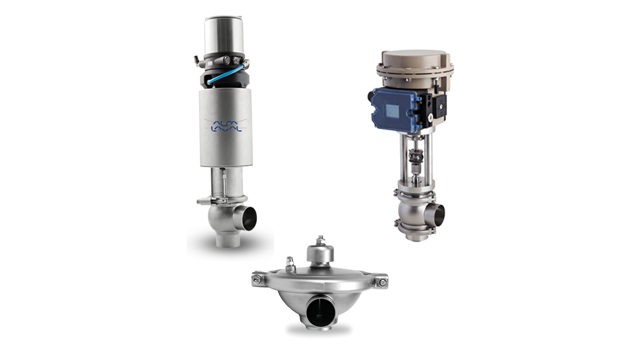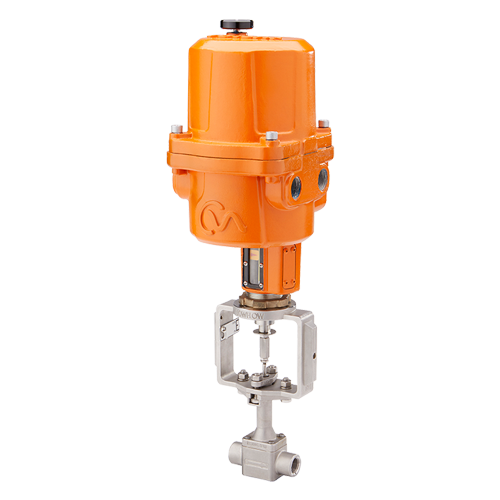Choosing the Right Control Valves: An Overview to Ideal System Efficiency
Choosing the Right Control Valves: An Overview to Ideal System Efficiency
Blog Article

Maximize Energy Savings and Convenience With Advanced Building Automation Controls
In the realm of modern-day style and center management, the integration of advanced structure automation manages stands as a crucial advancement. The convergence of technology and sustainability has birthed a brand-new era where energy effectiveness, convenience optimization, and functional streamlining are no more achievable realities however distant desires. By utilizing the power of automation, structures can adapt, respond, and develop in ways that were once inconceivable. The capacity for significant power savings and improved convenience is not simply a promise yet a possibility waiting to be fulfilled. This paradigm change in building monitoring holds the key to opening a globe where ecological conscientiousness and passenger wellness sympathetically exist together within the walls of our structures.
Energy Performance Perks
Energy performance benefits can considerably lower power usage and functional prices in structures. By executing energy-efficient techniques and technologies, building owners and drivers can attain substantial cost savings while likewise adding to environmental sustainability. One of the primary advantages of improving energy efficiency in buildings is the decrease of utility costs. Energy-efficient systems, such as sophisticated building automation controls, can enhance using sources like illumination, cooling, and home heating, bring about lower power costs gradually.
Furthermore, improved power effectiveness can prolong the lifespan of building tools and systems. By operating much more successfully, HVAC systems, lighting fixture, and other building components experience less damage, causing reduced upkeep and replacement costs. Furthermore, energy-efficient buildings commonly command greater property values and rental rates, supplying long-term financial benefits to proprietors.
Additionally, energy efficiency can enhance owner convenience and efficiency. Properly controlled interior atmospheres with optimal illumination and thermal conditions create a more pleasant and helpful workspace, bring about enhanced employee contentment and efficiency. Generally, the power effectiveness benefits associated with innovative structure automation controls are multifaceted, including expense savings, environmental stewardship, and occupant well-being.
Boosted Convenience Control
Enhancing comfort control in building settings calls for an innovative integration of advanced automation systems for optimal resident wellness. By making use of sophisticated structure automation controls, centers can tailor the indoor environment to fulfill the certain demands and choices of occupants. These systems enable precise guideline of temperature level, lighting, and air flow, producing a efficient and comfortable environment. Owner complete satisfaction and productivity are closely linked to thermal comfort, making it important to have systems in area that can adapt to changing conditions in real-time.
Improved convenience control goes past standard temperature level adjustments. It includes attributes such as personalized settings, occupancy sensors, and all-natural light utilization to produce a dynamic and responsive setting. By including these innovative controls, structures can not only boost comfort but likewise boost energy performance by optimizing system operations based upon actual tenancy and usage patterns. Ultimately, focusing on owner comfort with innovative automation systems brings about an extra pleasurable and much healthier interior environment.
Operational Effectiveness Improvements

Moreover, the execution of real-time surveillance and analytics devices makes it possible for building operators to recognize power ineffectiveness and functional anomalies promptly. By continuously monitoring energy use patterns and system efficiency metrics, changes can be made in real-time to enhance energy usage and guarantee peak functional effectiveness. control valves. Additionally, integrating need response techniques right into building automation controls can additionally enhance operational performance by dynamically readjusting energy use based on grid conditions and prices signals
Indoor Climate Optimization
Reliable indoor environment optimization is a basic facet of structure automation controls, making certain occupants' comfort and health while making best use of power financial savings. By using innovative sensing units and controls, building automation systems can continuously keep track of and change temperature level, humidity degrees, air high quality, and air flow to produce an ideal interior atmosphere. Maintaining comfy and constant conditions not just enhances passenger contentment however also improves efficiency and overall health.
Indoor climate optimization also plays a critical duty view publisher site in power efficiency. By fine-tuning air flow, cooling, and home heating systems based upon real-time information and tenancy patterns, building automation controls can substantially minimize power consumption - control valves. As an example, implementing techniques such as demand-controlled air flow and thermal zoning can aid minimize energy waste while ensuring that each area of the building gets the necessary conditioning.

Sustainable Setting Development
Structure automation controls not only enhance interior environment problems for energy performance and passenger convenience yet additionally lay the structure for creating a sustainable setting through tactical monitoring of systems and sources. By incorporating sophisticated structure automation modern technologies, such as sensors, actuators, and intelligent software program, centers can change and check energy usage in real-time to reduce waste and minimize their carbon footprint. These systems make it possible for anticipating upkeep, identifying possible concerns before they intensify and enhancing devices efficiency to improve durability and effectiveness.
Furthermore, sustainable atmosphere development extends beyond power administration to incorporate water conservation, waste decrease, and interior air quality renovation. Structure automation controls can manage water usage, spot leakages, and guarantee proper waste disposal methods, adding to total sustainability initiatives. Furthermore, by controlling and keeping track of ventilation and purification my sources systems, these modern technologies boost occupant health and performance while reducing power consumption connected with a/c procedures.
Conclusion
In verdict, progressed building automation manages offer significant benefits in regards to power savings, comfort control, operational performance, interior environment optimization, and producing a sustainable setting. By executing these controls, structures can achieve ideal efficiency while lowering energy intake and enhancing passenger comfort. It appears that the use of innovative automation technology is important in improving structure performance and developing a more sustainable future.
Energy effectiveness advantages can considerably lower power consumption and functional expenses in structures. Overall, the power effectiveness benefits connected with innovative structure automation controls are complex, incorporating price savings, ecological stewardship, and resident well-being.
Furthermore, incorporating need feedback techniques into structure automation controls can better improve operational performance by dynamically adjusting power usage based on grid problems and prices signals.
Structure automation regulates not just optimize indoor environment problems for power efficiency and owner comfort however also lay the foundation for developing a lasting atmosphere with critical administration of resources and systems.In final have a peek at this site thought, progressed structure automation controls offer significant advantages in terms of power savings, convenience control, operational effectiveness, indoor climate optimization, and creating a lasting setting.
Report this page